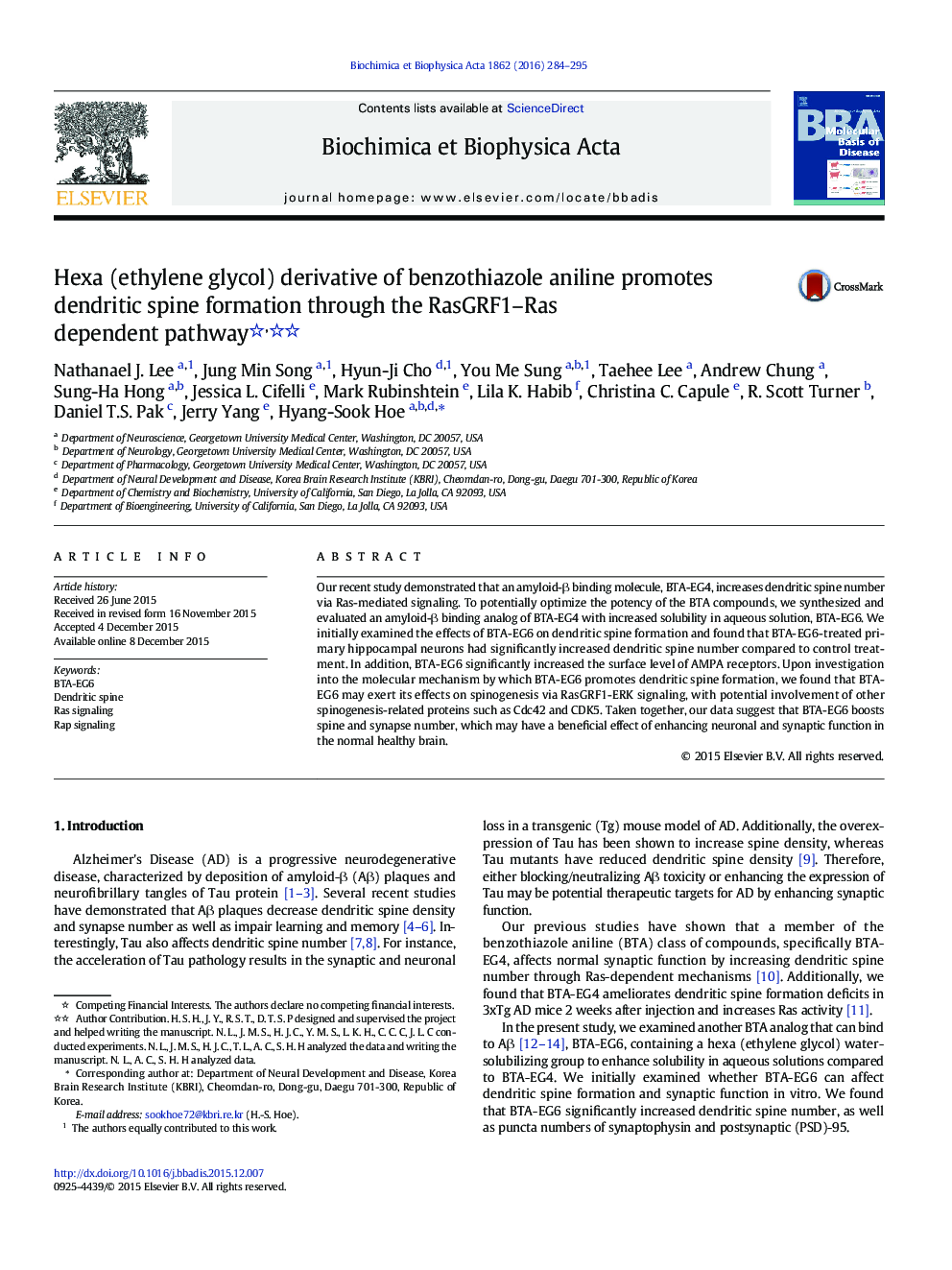| کد مقاله | کد نشریه | سال انتشار | مقاله انگلیسی | نسخه تمام متن |
|---|---|---|---|---|
| 1904492 | 1534637 | 2016 | 12 صفحه PDF | دانلود رایگان |

• BTA-EG6 increases dendritic spine number in vitro.
• BTA-EG6 increases the number of excitatory synapse.
• BTA-EG6 increases the cell surface levels of GluA1 and GluA2.
• BTA-EG6 increases spinogenesis through Ras, but not Rap signaling pathway.
Our recent study demonstrated that an amyloid-β binding molecule, BTA-EG4, increases dendritic spine number via Ras-mediated signaling. To potentially optimize the potency of the BTA compounds, we synthesized and evaluated an amyloid-β binding analog of BTA-EG4 with increased solubility in aqueous solution, BTA-EG6. We initially examined the effects of BTA-EG6 on dendritic spine formation and found that BTA-EG6-treated primary hippocampal neurons had significantly increased dendritic spine number compared to control treatment. In addition, BTA-EG6 significantly increased the surface level of AMPA receptors. Upon investigation into the molecular mechanism by which BTA-EG6 promotes dendritic spine formation, we found that BTA-EG6 may exert its effects on spinogenesis via RasGRF1-ERK signaling, with potential involvement of other spinogenesis-related proteins such as Cdc42 and CDK5. Taken together, our data suggest that BTA-EG6 boosts spine and synapse number, which may have a beneficial effect of enhancing neuronal and synaptic function in the normal healthy brain.
Figure optionsDownload high-quality image (38 K)Download as PowerPoint slide
Journal: Biochimica et Biophysica Acta (BBA) - Molecular Basis of Disease - Volume 1862, Issue 2, February 2016, Pages 284–295